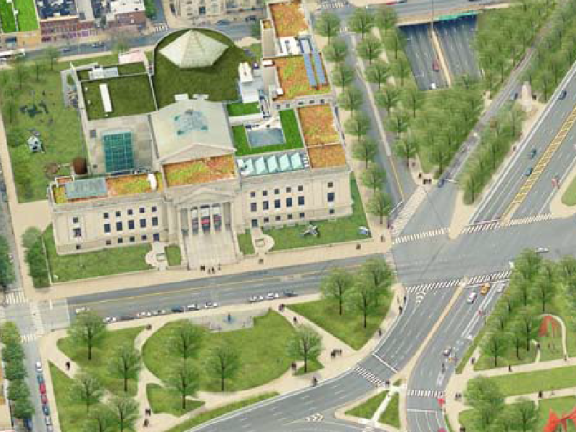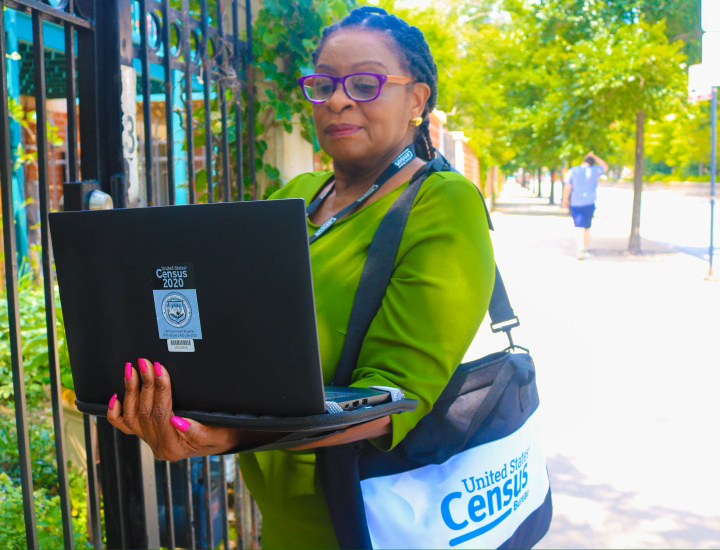
Even in this era of constant federal rollbacks to our most deeply held environmental protections, a headline like the New York Times’ “E.P.A. Is Letting Cities Dump More Raw Sewage into Rivers for Years to Come” from last Friday hits hard. The article details a softening of the Trump administration on regulating stormwater pollution in cities – specifically, a willingness to renegotiate how and when cities will be expected to overhaul their aging and antiquated sewer systems, which, due to the old systems’ limited capacity in the face of ever increasing rainfall, currently dump raw sewage into waterways during even the smallest rain storms.
What the article doesn’t mention is that there are some cities that are not throwing up their hands in the face of this challenge, not renegotiating their EPA agreements for permission to spend less and pollute more for years to come. Philadelphia is one of these cities, upholding its $2.4 billion commitment to reduce stormwater pollution for the benefit of millions of people.
How is it that Philadelphia, challenged by the highest rates of poverty among large cities in America, is staying the course on its major pollution reduction plan[1] while others cave? With a similar price tag to other programs across the country, Philadelphia’s stormwater plan stands out as a national model for an urban area taking an innovative approach to a major environmental problem. It’s worth taking a closer look at why.
It’s not how much you spend, but how you spend it.
The central argument among cities asking for lenience on their stormwater requirements is burdensome cost. Philadelphia has shown remarkable leadership in ensuring its investments in stormwater renovations produce maximum benefits for its residents, embracing community minded approaches and stretching every dollar through creative financing.
While others cities are taking a traditional “gray” approach to managing stormwater, which relies on underground tunnels to capture rainfall, the Philadelphia Water Department has embraced a “green first” approach that prioritizes green stormwater infrastructure[2] solutions – the use of trees, gardens, meadows and other plantings to capture and filter stormwater before it overflows the system, while also delivering additional benefits to communities at significant cost savings such as workforce opportunities and beautiful new open spaces. Both gray and green options come with expensive price tags and take time to develop. But when it comes to public spending, Philadelphia’s investment in green solutions is an example of achieving multi-faceted return on investment[3] and smart spending of public dollars, opting for a billion dollars-worth of new green spaces spread across dozens of neighborhoods, rather than a billion-dollar cement tunnel hidden underground to achieve the same result.
Promising innovations in conservation finance are offering new ways of leveraging every dollar spent and making green stormwater infrastructure more affordable for cities[4]. Philadelphia has gone further than many others in exploring ways to leverage city funding to attract new investment from a variety of public and private sources. The possibilities include debt mechanisms like social impact bonds, and creative use of the State Revolving Fund, as well as unique public-private-partnerships and pay-for-performance grants[5].
Raising revenue is essential, but who pays what can matter more.
Particularly in an economically stressed urban environment like Philadelphia, where one quarter of residents live below the poverty line, people with the scarcest resources cannot be expected to bear the brunt of stormwater pollution, both physically through their exposure to pollution and flooding, as well as financially through their water bills. To address this issue, the Philadelphia Water Department has demonstrated nationally significant leadership in striving for greater water equity within its approach to raising revenue.
Philadelphia’s first groundbreaking approach embraced fairness by adopting a scaled stormwater fee that holds the biggest pollution offenders most accountable. By calculating stormwater fees according to the relative stormwater contribution from properties of different sizes, Philadelphia ensures that those most responsible for this pollution problem are bearing the bulk of the costs to fix it. Additionally, in 2017, Philadelphia introduced a best-in-class income-adjusted rate that enables low-income residents to pay reduced water bills based on household income.
Pollution is certainly an expensive business, imposing costs on the polluters themselves, yes, but also on all the impacted communities and ecosystems experiencing harm. By capitalizing on the incredible innovations in stormwater management technology and conservation finance, cities can maximize the value and community benefit of the dollars they spend in complying with the law and meeting pollution reductions. And with an equity lens on who pays for pollution and how much, cities can ensure the most vulnerable are protected and still hold the worst polluters accountable.
[1] Philadelphia Water Department. “Green City, Clean Waters.” http://archive.phillywatersheds.org/doc/GCCW_AmendedJune2011_LOWRES-web.pdf
[2] Citizens for Pennsylvania’s Future. “What is Green Stormwater Infrastructure?” https://www.pennfuture.org/what-is-green-stormwater-infrastructure
[3] Sustainable Business Network. “The Economic, Social, and Environmental Case for Green City, Clean Waters: An Update.” https://gsipartners.sbnphiladelphia.org/the-economic-social-and-environmental-case-for-green-city-clean-waters-an-update/
[4] Environmental Finance Center. “Stormwater Financing and Outreach.” https://efc.umd.edu/stormwater.html
[5] Natural Resource Defense Council. “Wanted: Green Acres: How Philadelphia's Greened Acre Retrofit Program is Catalyzing Low-Cost Green Infrastructure Retrofits on Private Property.“ https://www.nrdc.org/resources/wanted-green-acres-how-philadelphias-greened-acre-retrofit-program-catalyzing-low-cost

